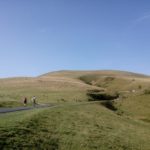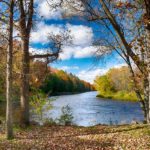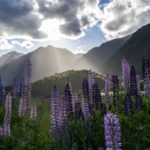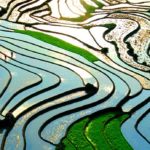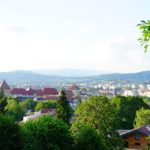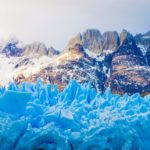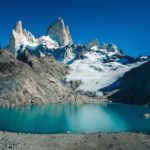In Conversation with Camino de Santiago Expert Beebe Bahrami
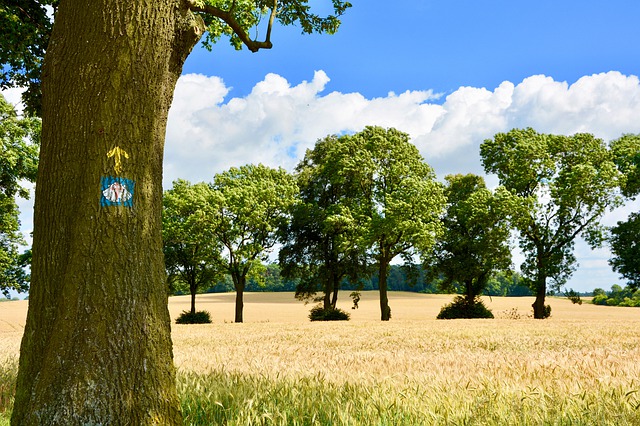
Writer and anthropologist Beebe Bahrami walked Spain’s Camino de Santiago for the first time in 1995. During this trek, and on countless walks after, she learned the detailed history of the route and important cultural nuances that most travelers miss. She also realized there were no guidebooks that covered those topics in addition to giving practical information.
So, in 2019 Beebe published Camino de Santiago: Sacred Sites, Historic Villages, Local Food & Wine. This guide book covers all the must-know logistics of trekking across Spain, as well the good stuff: markets, festivals, wine tastings and local cuisine.
We spoke to Beebe about writing the guide, overtourism, bucket-list travel and of course, the Camino de Santiago.
First, congrats on writing a book fully dedicated to the French route of the Camino de Santiago! Can you share how the idea for this book came to be?
I first heard of the Camino de Santiago in 1986 and I first walked it in 1995 and was so enamored with it, I kept going back.
My first foray there taught me about the historically documented and surviving culture of matriarchy that is an important facet of the cultures of the Pyrenees and across northern Spain, from Basque Country to Galicia; I discovered it was real on the ground, a geography where historically women have had more self-determination and social power. (Romans chronicled this as they conquered Iberia because it struck them as so different from their own heavily patriarchal culture). It is different walking in a place with a deep legacy like this, for both women and men.
For me, it was liberating and one big reason why I kept going back. I felt utterly safe as a woman and learned to trek solo. And each time I returned, I discovered that there are many layers to the Camino, and that many first-time walkers miss these rich and engaging nuances.
In part it is because they are so tired from a long day of walking, and also because other guide books only make rudimentary references to the history of the places and often just the things that keep getting repeated. They note little or nothing about the traditions, festivals, cultures, deeper folk stories, food and wine traditions, and the like, that intimately define these unique places and their connection to the Camino.
In Conversation with Camino de Santiago Expert Beebe Bahrami.
I wanted to remedy this and write a book that brought all the Camino’s richness, its fascinating and multifaceted experiences and lore, into one place, along with great practical details on the trail, where to eat (and what to eat!) and sleep, and what not to miss.
The Camino is a historic trail that passes through wildly diverse and compelling territories with great wild beauty and that have drawn humans to them for many millennia, since prehistory to the present. It is more than the already pretty fascinating medieval route, which is built over earlier routes and sacred sites, from Celtic-speaking peoples and Romans, and also earlier, going all the way back to earlier prehistoric peoples. In fact, the oldest human remains discovered in Europe are on the Camino, at Atapuerca (near Burgos), and are 1.2 million years old.
I wanted readers to know about all these significant and amazing places along the way, and also to enjoy the present and its rich cultures, food and wines, and folk traditions.
In the book you write: “the Camino is in many ways the act of reclaiming a sense of wonder and beauty in one’s life.” With all of your experience with the Camino, is there anything new you learned in the research and writing process for this book? How does it continue to inspire a sense of wonder?
Each time I walk the Camino it is as if for the first time in its ability to teach me something new about the world through which it passes and about myself. It never ceases to awe me with its natural beauty, which never gets old and reveals different facets each time. The same is true of its human beauty.
I have written a lot on the Camino before, such as a key part of my book, The Spiritual Traveler Spain—A Guide to Sacred Sites and Pilgrim Paths, but this time, writing exclusively on the Camino and for such a comprehensive guidebook as Moon’s Camino de Santiago, which includes all the practical information, all the trail information, and all the historical, cultural, and culinary information, I got to go even deeper into the trail than ever before.
Locals really rallied with enthusiasm over the effort and showed me deeper secrets, especially of their churches and pilgrim traditions. For instance, in Torres del Rio, one local took time to explain to me the sacred geometry on which their octagonal round church was based, and that it was built on a spot with strong earth energy that the church’s structure amplifies. As much as some might call this New Age-y, it was in fact embedded in the old lore of the place.
In Conversation with Camino de Santiago Expert Beebe Bahrami.
In many other places, people reinforced a folkloric tradition that was very real to them and the experience of the Camino, based on a traditional children’s game called the Game of the Goose (El juego de la oca). It is in some ways like our game of Snakes and Ladders, but more involved and, unlike it, also has a deeper meaning as a metaphor for the Camino and for pilgrimage.
One rolls the dice, moves along the board game, which is like the trail of the Camino, and faces similar ordeals, gifts, and transformations in the game as one receives when walking the Camino. (I made sure to include this information in the guidebook!)
Pilgrims also opened up more to me, sharing more about their experiences and how a guidebook could best support their walk. In this, I think I learned more than ever before that there is an incredible spirit and generosity on the Camino–its people, locals and pilgrims alike, and the road itself. I confirmed without a doubt that trail magic is very real and unfolds when you least expect it to give you exactly what you need each day, as you need it.
In the book, you say one of your favorite things about the Camino is “sitting with locals on their front stoops to chat about Camino lore.” What is one of the most memorable of those moments? What did you learn?
One such moment was what I just mentioned in Torres del Rio, which came about because I was in no hurry to hit the trail one morning but instead saw a woman seated outside her home and began speaking with her, asking her about the village and the church.
Another most memorable time was in the village of El Burgo Ranero. The main street there is the Camino trail, and midway along it I passed three elders, two women and a man, sitting on a bench on the sidewalk between the front doors of their adjoining houses. They were enjoying watching pilgrims arrive and smiling broadly to them and welcoming them. I just had to stop and ask them what it was like to live right on the Camino, which since the Middle Ages passed right there.
I slipped off my pack and sat with them as they told me it was an honor to live all their lives on such a historic road and to greet pilgrims. In fact, I then asked them if they ever grew tired of all the strangers who were constantly walking past their front door.
They replied that no, to the contrary, it was the most splendid thing, to be the guardians of such a sacred tradition, to greet and care for the stranger walking into town. One of the women added, “It’s also very interesting, like we get to travel all over the world without ever having to leave because the whole world comes here.”
Today, people from over 140 countries walk the Camino annually, so it’s pretty rich.
Today, people from over 140 countries walk the Camino annually, so it’s pretty rich. The three then began to tease me and tell me I should stop walking, and stay right there and join them. It was tempting! (I am lucky to have had the chance to live on the Camino before, and it is truly a magical experience to see people coming and going each day and offering help as needed. But I also have itchy feet and they reminded me that I wanted very much to be out on the trail again!)
If you had to share one piece of your own Camino lore, what would it be?
That trail magic is real, and the Camino gives us what we need most, as the popular trail saying goes, ‘it guides and provides every step of the way.’
In this amazing and truly magical support, I have learned to trust the unknown, that I can rely on myself, that I can also rely on the world, which a more benevolent and generous place than we often think, that there is nothing sweeter than stepping off into an adventure where you’ve make no prior reservations and just show up and figure things out, and best, to really walk my own walk, both on the trail and in life.
You mention that you walk the Camino every year. How does the way you walk differ when preparing for an upcoming book? Is there a difference in the way you transit the Camino?
I’ve always walked the Camino with some form of professional research and writing interest, and have always had a notebook in my hip pocket to jot notes as I go. Because I am interested in all the details along the trail, I often stop and take things in, speaking to locals if they are around, and photograph copiously, both to capture the beauty of the trail and to take notes in a different form.
I’ve always been geeky in this way and it means I tend not to walk fast and my days are often longer than the average pilgrim’s. But to write the Moon Camino de Santiago guidebook intensified all these efforts, because every detail mattered even more, from nitty-gritty practical trail details to enriching cultural, culinary, environmental, and historical ones.
It made for even longer days, many stops to write everything down, many more photos (thank goodness for digital photography), and many times needing to check into a private room in a pension or rural hotel instead of a communal pilgrim’s dorm (known as albergues) so that at night I could catch up on notes and writing without bothering others in the dorms and be able to fully focus. But I also made sure to stay in many albergues, too, because they are a part of the trail magic of the Camino. I missed staying in them when I didn’t, but I also got a lot more work done!
Since you began walking the French route in 1995, what changes have you witnessed, and how would you interpret them?
It certainly wasn’t as busy then, but it also wasn’t as well marked and it didn’t have as much infrastructure in terms of albergues, hotels, cafes, and other support services. So, you could say it was harder in one sense, finding places to stay and eat, but easier in another, experiencing a more heightened sense of out-there adventure, solitude, and the unknown of the open road. It was always fun to see who else you might meet as you walked but never as social as it has become now.
Today, for many, the Camino is a social experience, and many people seeking a kind of casting about international social scene—meeting lots of people, eating and drinking together every night, etc, not knowing who you’ll see again or meet the next day—are drawn to it.
In 1995 it was first and foremost a walk people undertook for reflection and solitude. Certainly many types of pilgrims then, as now, walk it and today I think both introverts and extroverts are still drawn to the contemplative aspects and the sense of being on a kind of quest and transformative journey that this long walk in history and nature offers. But the social aspect has become far more pronounced so it means that the seeker-pilgrim out there seeking long stretches of meditative silence will now need to plan to walk at less popular times off the year or to walk really early in the morning.
Another major change, one that concerns me, is that with so many more people on the trail, that our impact on the land and the local communities is more pronounced, both in positive and negative ways. In the positive, it has led to a flourisihng of rural worlds, whose village life and economies were in many ways waning.
Another huge impact is on the environment.
In the negative, many more people arrive without trying to learn about the culture or a few words of Spanish, and are rude or abrupt when locals are working hard to serve everyone’s needs.
Another huge impact is on the environment. People use the trailside or a field to relieve themselves and leave toilet paper or other more polluting matter, and there are simply too many pilgrims on the trail anymore to do that and not have a negative impact on a farmer’s field or the nearby waterways. In the past, and more so now, it is imperative to hike the Camino as one would any natural trail and not pollute or litter and to carry out what one takes in.
All this said, I find that the spirit of the Camino lives on, that pilgrims are still more conscientious and concerned than self centered, that locals are as ever as generous and kind as before, and that the Camino always supports everyone, whatever their walk. I think it will always be there for us–it survived the onslaught of its heyday in the 11th and 12th centuries after all! And also that we need to be there for it, to take care of the integrity of its wild terrain and its cultures to assure it remains a magical geography and experience.
With bucket lists, countries visited tabs and social media, there often seems to be an emphasis on seeing everything in world, even if it’s just to say you’ve been. What is the benefit of returning to have the same experience again, or becoming a semi-local somewhere?
I think bucket lists that help a person focus on what matters in life and enrich their experience of living are great. The ones that are just a check list focused on consuming a place–seeing it but not really being in it–to me, are more problematic.
I certainly love to travel and experience the newness that travel can make me feel, but I like even more that it has allowed me to discover the places that make my heart skip a beat, and that bring more of me into engagement with life. Those places for me are in southwestern France and northern Spain, the places to which I’ve now returned over the past 30 years.
Going back many times, being semi-local there teaches me amazing new things each time, now courtesy of locals who know I am returning and that I love their land and culture. They take me more seriously and show me things I’d never know about by visiting once.
You enter at a different layer each time.
Becoming fluent in Spanish and French (and understanding a bit Occitan, the old Romance language of the area) has helped heaps in this effort, but also are the gift of returning often because I learned the languages by living there and being curious. Each return is actually not a return to the same experience, it is a return to a place with many layers, but each accessible only by reaching the layer just above it.
You enter at a different layer each time. This is profoundly true for the Camino–each time it is a totally different experience but one bound by the sense of adventure, beauty, and discovery.
Beebe Bahrami is the author of five other books and splits her time between the U.S. and Europe. You can read more of her writing on her blogs, Pilgrims Way Café and Café Oc.

